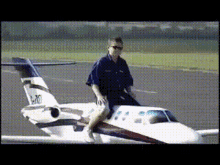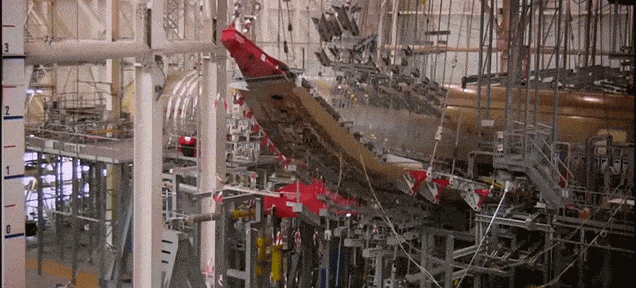I flew for the first time on a plane last week and I’ve seen planes take off at the airport. It looks crazy. But being on one is totally different like holy shit. The thing just FLIES. It just… Soars… Through the sky! Like whoa man. Wtf… It’s crazy. With how much these things weigh, it’s insane to me the thing can just go up and bam, there we are, we’re flying now. Like wow… Dude crazy.
Wait until you find out about electricity! 🤯
Computers is teachibg rocks to think
We grow flawless crystals, slice them into perfect disks, engrave billions of arcane runes onto them with magical potions and rays of light, animate them with lightning, and make them do our bidding.
And then we give them an “intelligence” that can’t even count the Rs in strawberry…
I think we’re doing pretty fucking well, all things considered.
engrave billions of arcane runes
Omg, you just made me love my job more.
Do you work in a fab? If so would love to know more about your work
Design, close to tape out now, but also post-silicon and bringup.
It’s fun as all fuck, never thought about it as incantations or runes, then the rock comes back and we cast spells to bring it to life I guess.
Takes a while but is just incredible.
Saw
 this the other day, seems relevant to your comment
this the other day, seems relevant to your commentTry looking at a die under a microscope
By filling them with lightning
Magnets, how do they work?
Does anyone actually know? We have laws and math that predict and model behavior but last time I checked know one knew why.
I mean, big magnets work because they are made of electrons that have their magnetic fields aligned so they don’t cancel each other out. Now, as for why electrons have magnetic fields in the first place, that we don’t know
Considering how we use it. It is absolutely fascinating. Same for magnetism
tomato tomato =P
And telephones! Even en old-school analogue phone is pretty amazing how sound becomes an electrical signal and then is converted back to sound at the other end.
Modern digital phones are just pure magic compared to analogue phones.
or magnets!
I hate that everybody’s like, it’s not that big a deal.
We only started doing it 124 years ago! Prior to that it was a very big deal indeed.
Everyone’s so fucking smart these days, there’s no room for a sense of wonder. It’s like being blasé and knowledgeable is cool. It’s really not.
You keep flying with your beautiful sense of wonder, Buttflapper!

Well fucking said. Smoke noodles rarely have room for curiosity, which is where new things often come from.
Edit: Not sure how smarmy know-it-alls became that, but I’m not changing it now
I’m pretty sure i can’t trust Arthur Vandelay, they are the kind of people that would pass off something they did as if it wasnt intentional
Some lady told me she read Atlas Shrugged while in the hospital for a long stay, kept alive by equipment she neither invented nor paid for. How oblivious people can be when we are all just barely something more than monkeys? Some of us manage to be passably unoblivious and I think that’s what makes us human; the potential to be more rational than a monkey. It’s no guarantee, though, as you so noted. You know there was a caveperson who just learned about fire and still went around and acted like he invented it straight up to the caveperson that did invent it. Monkey brain stuff.
I don’t need ignorance to feel wonder. I think things are cooler when I can marvel at the complex mechanics behind it all.
True. But I wasn’t arguing that.
What puts me in awe of things like flight isn’t the act itself, but the brilliance of the people who designed it to work. I look at the aerodynamic shape of an airfoil and think “we did that…humans”.
To be fair, we sorta knew it was possible because birds. I think it’s more impressive when we don’t know what can happen, like breaking the sound barrier or putting people in space.
That’s the thing though, what’s amazing about planes really depends on your knowledge base or what experience is specifically being enjoyed. If you don’t understand how planes work then the difference is moot because whether seeing or doing the entire thing is magical. If you do understand how planes work you might know that the crazy thing isn’t flight, we knew how to do that since approximately 1800 when the first gliders were built, the crazy part was generating enough power to make powered flight possible. If you understand how flight works and are still enjoying the experience of flight is where wonder still exists.
You know the wonder of flight still exists because some number of kids and adults would pick flight as a super power if given the choice.
I used to think so until I realised that air and water are both fluids, except air is thinner.
To be clear to anyone with minds being blown: air is gas and gas is a type of fluid. Water is liquid and liquid is also a type of fluid.
… gas is a type of fluid.
that goes a long way in explaining some of those farts.
Exactly. Ever skip a stone on the surface of a lake? It’s like that, except it’s a continuous skip, with air instead of water, and you’re inside the stone.
That’s a bad analogy.
It was a joke.
That’s an awesome analogy.

I would be equally amazed to see something denser than water swimming.
Mythbusters has an episode where they swim in non-newtonian fluid
Ok, you have my attention, going googling.
That was interesting: https://www.youtube.com/watch?v=-wiYtoG9kZE
Like a submarine?
Submarines work by manipulating their density, don’t they? Then they just float at whatever level matches their density.
Yeah, they’re more like dirigibles than airplanes. But same as airplanes, people have had a hard time believing that something made of metal can float.
it works because we believe in it. if everyone would lose faith in airplanes, they’d drop out of the sky.
Can I just lose faith in the private jets?
WhhaaahhhHH!!!
And will it fly higher if we have the Faith of the Heart?
easier yet, if everyone crams to the tail, it will likely crash
Is this true? Sounds true but I feel like this should also be a test they do to ensure it doesn’t fail.
Don’t forget how high you get.
Last time I flew I didn’t get high at all. I must be doing something wrong.
Don’t you need to actually inhale?
Oxygen? Only if you want to keep being an alive person.
Bold assumption there. According to this formulation, I believe that the desired end goal is actually to be a “high” person. Which apparently only requires a 60 ton chunk of metal to make happen so…


And the one before?
ARE. OP is clearly very high right now.
If you get high enough, the idea of heavier-than-air objects not inevitably succumbing to gravity may fill you with wonder as well.
I know right… the wings dont even flap!
They really should.
Lazy, if you ask me.
They flap pretty good in heavy turbulence.
I’m not sure that’s quite the same
Planes get excited when they encounter turbulence, so they flap their wings. It’s so cute!
It’s simple. You just need 60 tons of lift and thrust. Aerodynamics help but you can make a brick fly.
see: The US Space Shuttle program
“It’s just always exciting! That amazing moment when twelve tonnes of metal leaves the earth… and no-one knows why!”
“Yes, we do.”
“Yeah, but, you know, not really. I mean, we know you need wings, and engines, and a sticky-up bit on the end for some reason, but it’s not like we actually know why a plane stays in the air.”
“No. No, Arthur, we really do! We- we do, we do know that!”
I don’t know why but I thought that said “Archie” instead of “Arthur”, and read that as Archie and Edith Bunker…and it kind of worked. From the later seasons, when Edith was getting sick of his shit.
Fucking magnets, how do they work?
I find it equally neat how displacement allows a 100,000 ton ship to float.
As I’m sure most know, planes fly because of the angle of their wings and airframe shape (also known as an airfoil). As moving air flows over the wing it creates downward pressure, which, as a result of Newton’s 3rd law (reaction to a force), allows moving air below to create lift. And upsy daisy she goes.
Science.
That lift explanation is innacurate/incomplete. While there may be some equal and opposite forces depending on the angle of attack, the primary reason for lift is due to Bernoulli’s Principle. Airfoils have a rounded upper surface with a longer path for air to take, relative to the underside. This requires air to move at a higher velocity over the top, and since A1 x V1 x P1 = A2 x V2 x P2, pressure over the airfoil decreases. It is this pressure differential that creates lift.
In regards to aircraft, Newton’s third law of motion applies to thrust from a propeller or jet engine.
Bernoulli’s explanation and Newton’s explanation are the same explanation made from different frames of reference. They’re equal, I don’t understand why people insist that one or the other is incomplete or that they somehow both have different contributions to an airplane’s flight. They’re the same. The airplane flies because the air pushes it up turning some of the energy from its substantial forward movement through said air into enough upward acceleration to counteract gravity. That happens both due to pressure differential AND the sum of the deflection of air in exactly the same measure, they are directly linked and have to be equal. Bernoulli’s explanation is one particularly nuanced and clever way of looking at and understanding the exact mechanics of how that happens and if you plug the resulting values into Newton’s math it matches perfectly. The zero “angle of attack” for a cambered airfoil shape is actually measured this way not by measuring the angles of the physical surfaces or anything like that. The Newtonian explanation is just another way of looking at it. Either way it requires intense computations to come to exact numbers, but the numbers are the same either way. The pressure differential of the air IS the mechanical force of the air, happening as an equal and opposite direction to the deflection of the volume of air the plane is flying through, either of which is what we call lift. They’re all the same thing, happening at the same time and yes you can look at them from different perspectives but that doesn’t mean one perspective is wrong and the other is right. They’re all accurately describing the same thing. It is useful to know both, but not necessary and it does not make either of them incorrect.
This discussion always reminds me of the “airplane on a treadmill” argument where both sides read the premise differently and scream at each other that only their way of interpreting the question is right.
From a “pressure make plane go up” point of view, yeah I guess it’s all the same, but I think the methods are distinct enough. Bernoulli’s works by reducing pressure above the airfoil. Action reaction increases pressure below it.
they are directly linked and have to be equal.
I don’t follow. Unless you’re trying to account for the total amount of lift with each separately and the math lines up. I guess that wouldn’t surprise me because bernoulli’s principle is derived from newtonian physics, specifically the second law F=MA, and both contribute to the total production of lift, but not in equal amounts. Symmetrical airfoils for example rely more on angle of attack to generate lift, while an asymmetrical one can maintain level flight at a negative aoa at high enough airspeed.
Yah, that’s correct. I was trying to give the most simplified version, without getting into conservation of energy in a fluid.
Now I’m annoyed with myself for not explaining it further. You did a great job tho.
You don’t need rounded wings to fly though and how are (some) planes able to fly upside down if that is the main explanation of lift?
It’s the main production of lift for asymmetrical airfoils, symmetrical airfoils rely on angle of attack. Basically they point the wings at an upward angle to push air down. This can work upside down.
You think that’s crazy? The ship that blocked the Suez Canal, the Ever Given, has a ship displacement (how much water is displaced when it sits in the ocean) of 265,000 Tons.
That’s 240 million kilograms.
And that shit just floats on fucking water maaaaan…
Since when 1000kg is not equal to one tonne?
Ton (imperial) is 2000lb vs tonne (metric)
There are tons of tons, believe it or not.
There’s the short ton (2000lbs), long ton (2240 lbs), and tonne (1000kgs) which are all measure weight. However there’s also the shipping/freight/ocean ton which is a measure of volume (which is also different in the US and UK), and the register ton.
However I did make a mistake. The wikipedia page I was reading said the weight in t and long tons. I made the mistake of assuming they meant short tons - in reality when measuring displacement for a ship, tonnes are used (which is pretty sensible, considering you’re displacing water and a liter of water to a kilogram of water have a pretty easy conversion formula formula…)
This guy tons.
I see, the common “Americans will use anything but SI”, but in this case it’s also the Brits lol
Thanks for explanation
Don’t get them going about their crazy units!
An a380 is so big when it takes off it looks like it’s moving slow, just kind of hanging in the air
Dude, the first time I saw a C5 Galaxy take off I was amazed at how slowly it was moving. It’s like what I thought I knew about physics was just wrong, it was so cool.
In much the same way that bricks don’t
Glitch that’s going to be patched out eventually
Now there’s another shower thought.
What if one day airplanes just like…stopped working…
So there’s this neat thing in quantum mechanics where the state of something could change to a more stable state in what is known as false vacuum decay.
Then it causes everything else of the same type to decay/collapse to the more stable state in a wave travelling in every direction at nearly the speed of light.
Such an event could rewrite fundamental forces of the universe and… one day planes just stop working.
Probably other bad stuff happens as well like our cells stop working and we all die.
It’s like quantum tunneling, theoretically possible but not applicable to macroscopic objects. No matter how often you throw a tennis ball on a wall, it will never tunnel through even tho the calculated chance is non-zero and your amount of tries is infinite.
“I flew for my first time on a plane”
Now I just feel old.
I didn’t fly on a plane until i was nearly 30. Dont know if you are in the US, but outside of the US, it’s less common to fly anywhere. high speed rail between countries in europe, UK is small enough to drive anywhere, boats and eurostar train to get from UK to Europe. Euro tunnel if you want to take your car to europe.
Or if you’re just poor too! My parents are near retirement age and taking their first vacation by plane next month.

Dafuq is this!? Stress testing?
Basically. The wings have to be able to bend that much so they don’t break off in strong winds or hard maneuvers.
No, every once in a while the planes need to stretch out. They get tired from being so stiff. This helps their joints later in their life span.
I’m even more impressed by aircraft carriers. Just one of those things weigh as much as 250 fully loaded Boeing 747s. And it just floats. :)



























